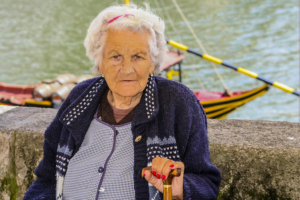A Look at Elderly Poverty in Portugal
 The most recent census in Portugal reveals a 2.1% population decline over the past century, bringing the country’s total population to approximately 10.3 million people. However, during this period, the proportion of elderly residents has substantially increased, accounting for 23.4% of the population. There are expectations about the percentage rising in the future as the average age of Portuguese citizens increases. For this reason, there are growing concerns over the issue of elderly poverty in Portugal.
The most recent census in Portugal reveals a 2.1% population decline over the past century, bringing the country’s total population to approximately 10.3 million people. However, during this period, the proportion of elderly residents has substantially increased, accounting for 23.4% of the population. There are expectations about the percentage rising in the future as the average age of Portuguese citizens increases. For this reason, there are growing concerns over the issue of elderly poverty in Portugal.The Problem
The older demographic faces problems that younger generations do not experience, including elderly poverty in Portugal. As of 2021, the nation saw 17% of elderly people at risk of poverty compared to its 16.4% national average. Older women tend to be more affected by poverty than men, but both carry extra and strenuous burdens.
Older citizens tend to be less engaged in social and cultural activities, and this can result in reduced life satisfaction. In 2021, more than a third of people in the country, aged 16 years or above, reported health problems that limited their participation in activities.
Poverty exacerbates this condition as those with limited resources have less access to basic needs like water, food and health care. Many live in a dependent state without any means to support themselves or provide an independent source of income. Based on data from the statistical office of the EU Eurostat, 37.2% of the elderly population was dependent in 2022.
Being dependent prevents elders from seeking new opportunities and keeps them sedentary.
When the family is impoverished, then the elderly has even less of a chance to get the help they need because care service costs increase with age.
Only 16.8% of Portugal’s elderly population said their health was good or very good. The majority reported their health as fair, bad or very bad with about a third in the latter categories.
According to a study by ScienceDirect, lower income in Portugal correlates with lower life, happiness and health. However, an interesting finding shows that elderly adults in Portugal have high satisfaction with life, even with poor health standards and diminished material wealth. Older Portuguese citizens went through dramatic socio-economic structural changes during the world wars and withstood the Estado Novo regime until 1974. These lifelong experiences contribute to the elderly population’s outlook that they have today, with higher living standards and incomes nationwide.
Future Outlook
Elderly poverty in Portugal will continue for future generations unless continued steps reverse it. Even though the citizenry is getting smaller, the elderly community will rise.
In 2011, Portugal addressed the United Nations (U.N.) under the Ministry of Foreign Affairs, regarding “the rights of older persons.” The agency stood by its continued efforts to promote the safety, happiness and health of an aging country.
Senior programs make up a large share of government funding and are predicted to gain more support. As of 2021, old age made up 11.9% of total spending on social protection, which was the highest out of any other expenditure. This means more spending on pensions for the oldest citizens and attending to their special needs.
Portugal also has a financial support system for low-income recipients called Solidarity Supplement for the Elderly (CSI). Citizens are given financial assistance with incomes below the reference value of €488.21. The estimate paid to these recipients depends upon the difference between the reference value and the pensioner’s income. This allows for the most destitute people to receive more assistance.
More people are covered by the program than in past years. Previously, the reference value was lower at €438.21 which limits the scope of those covered. CSI now has a higher maximum and no longer considers children’s incomes when giving financial assistance.
Looking Ahead
There are challenges regarding elderly poverty in Portugal, but government programs and education on the problem aim to aid those in need. Recent improvements in the nation’s social assistance programs show a positive future for the elderly.
– Emma Ferschweiler
Photo: Flickr
